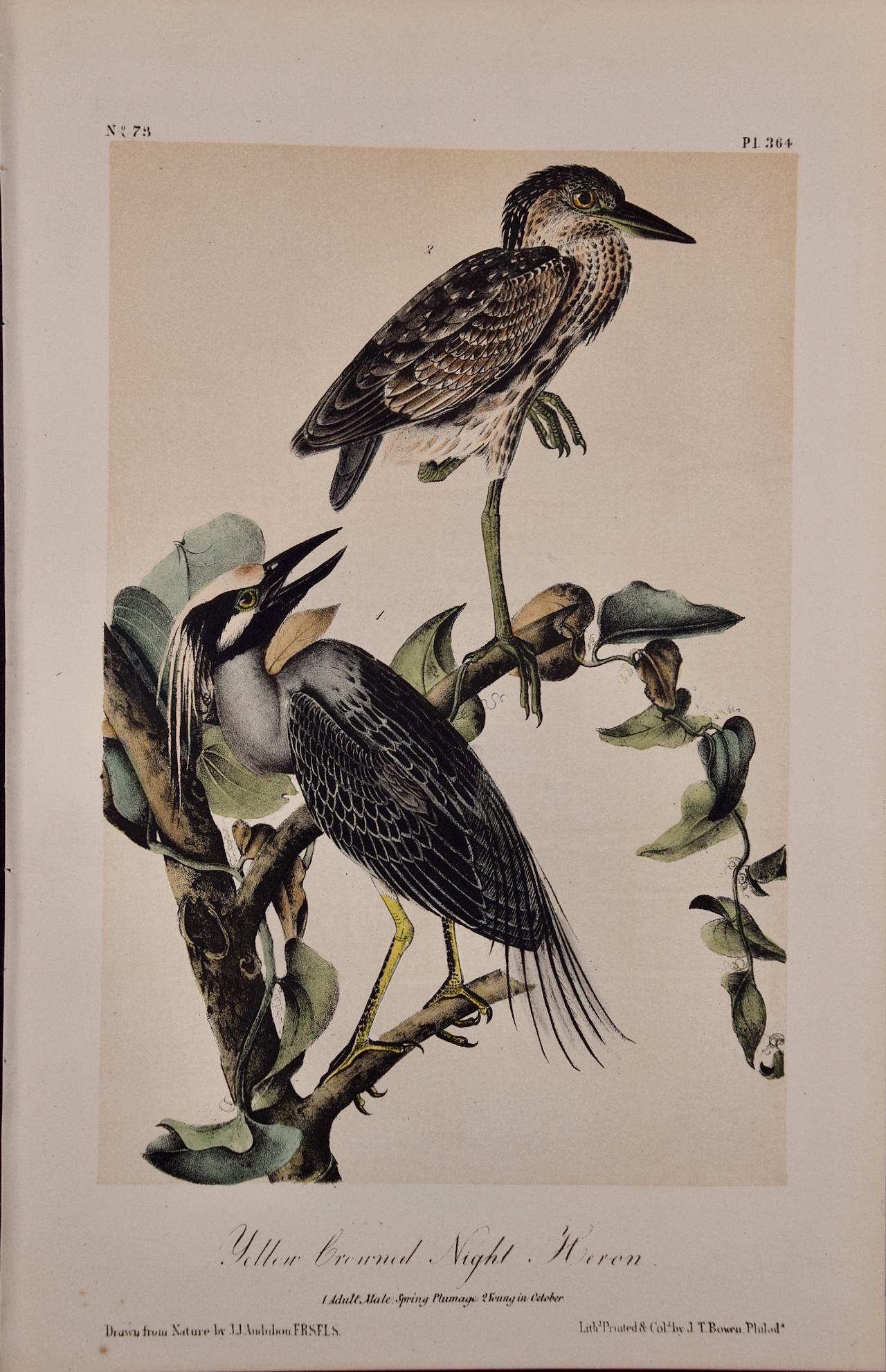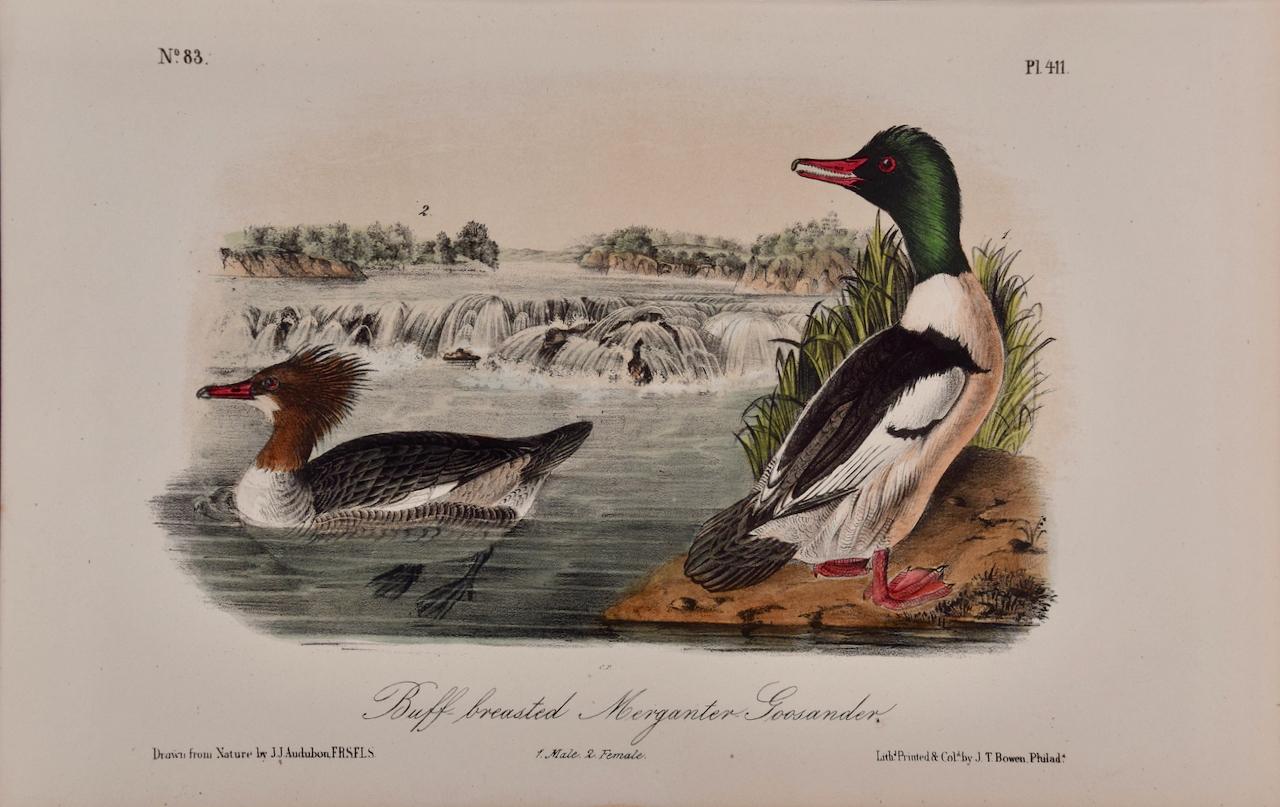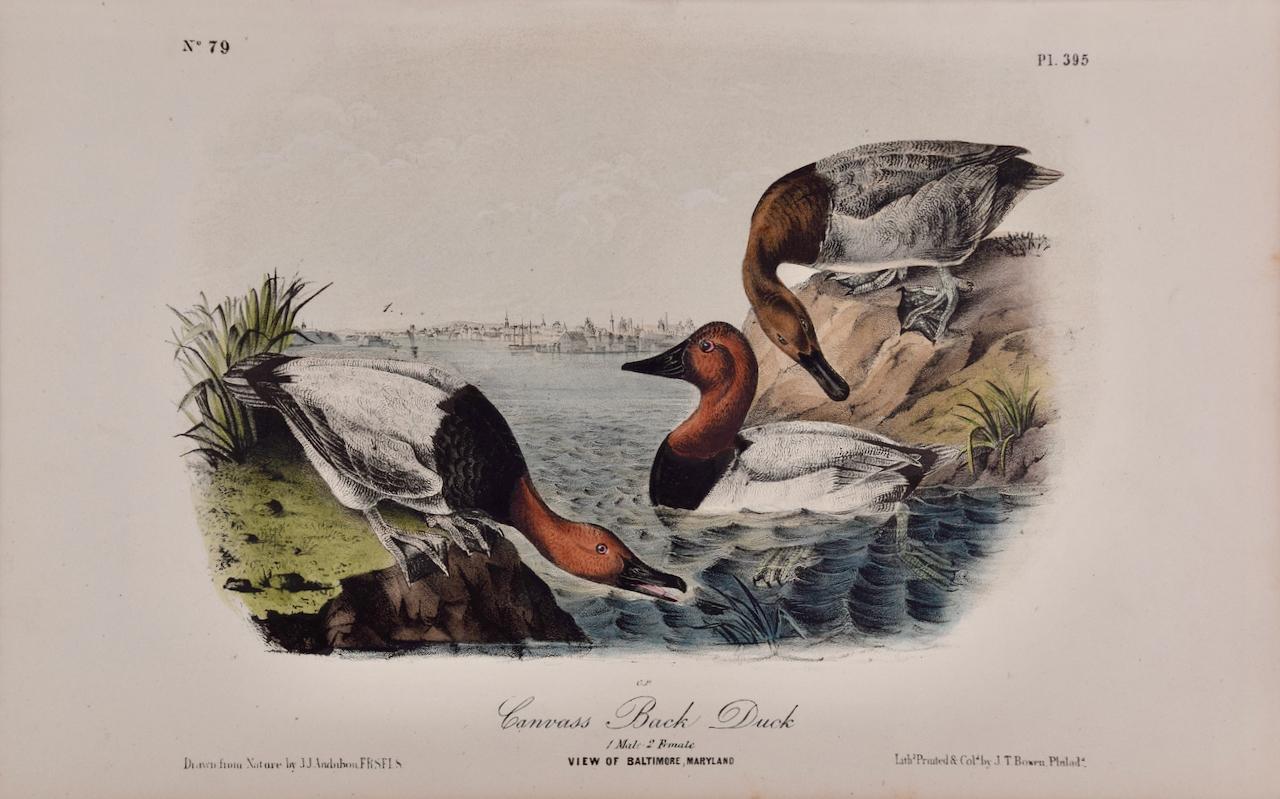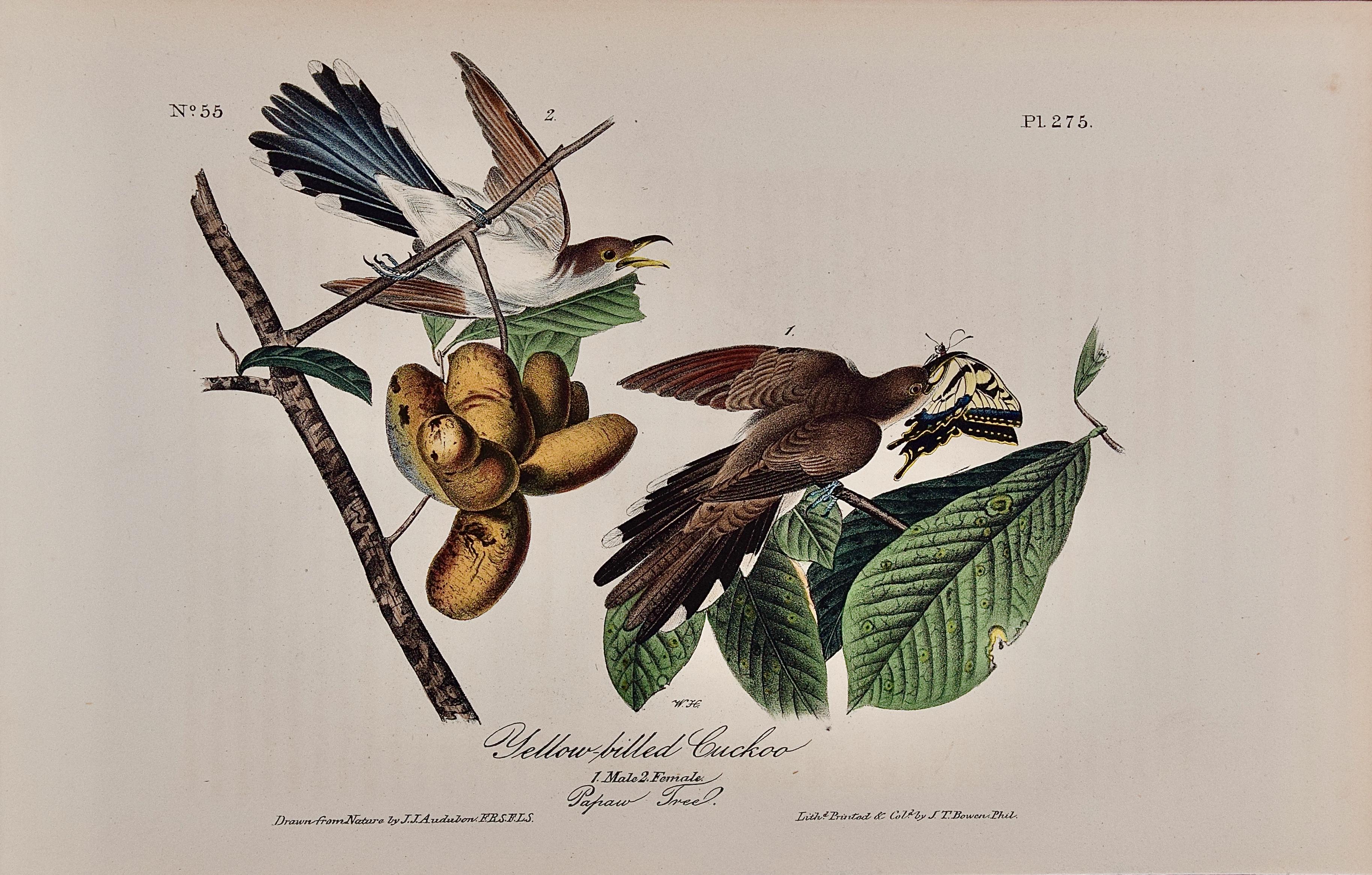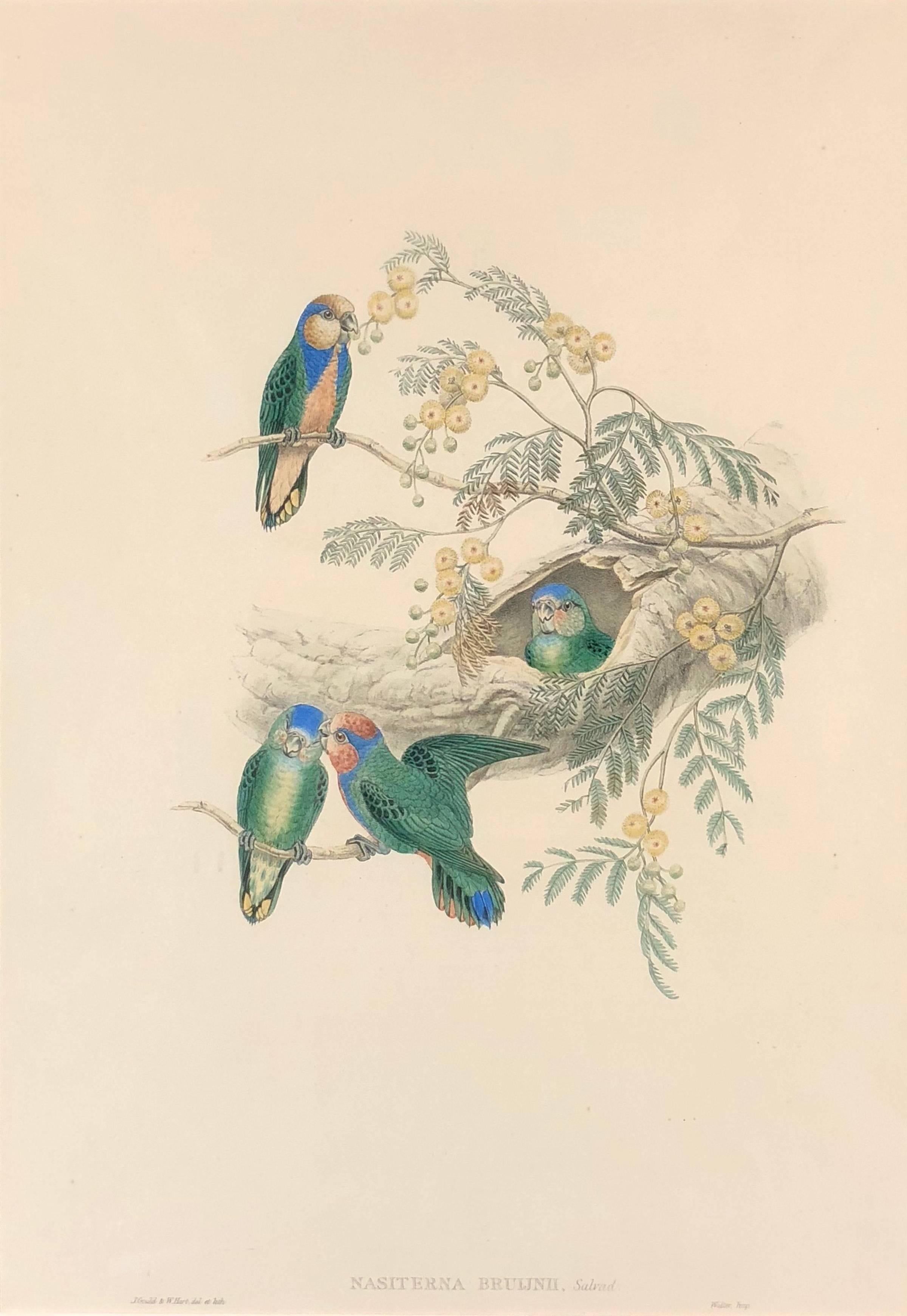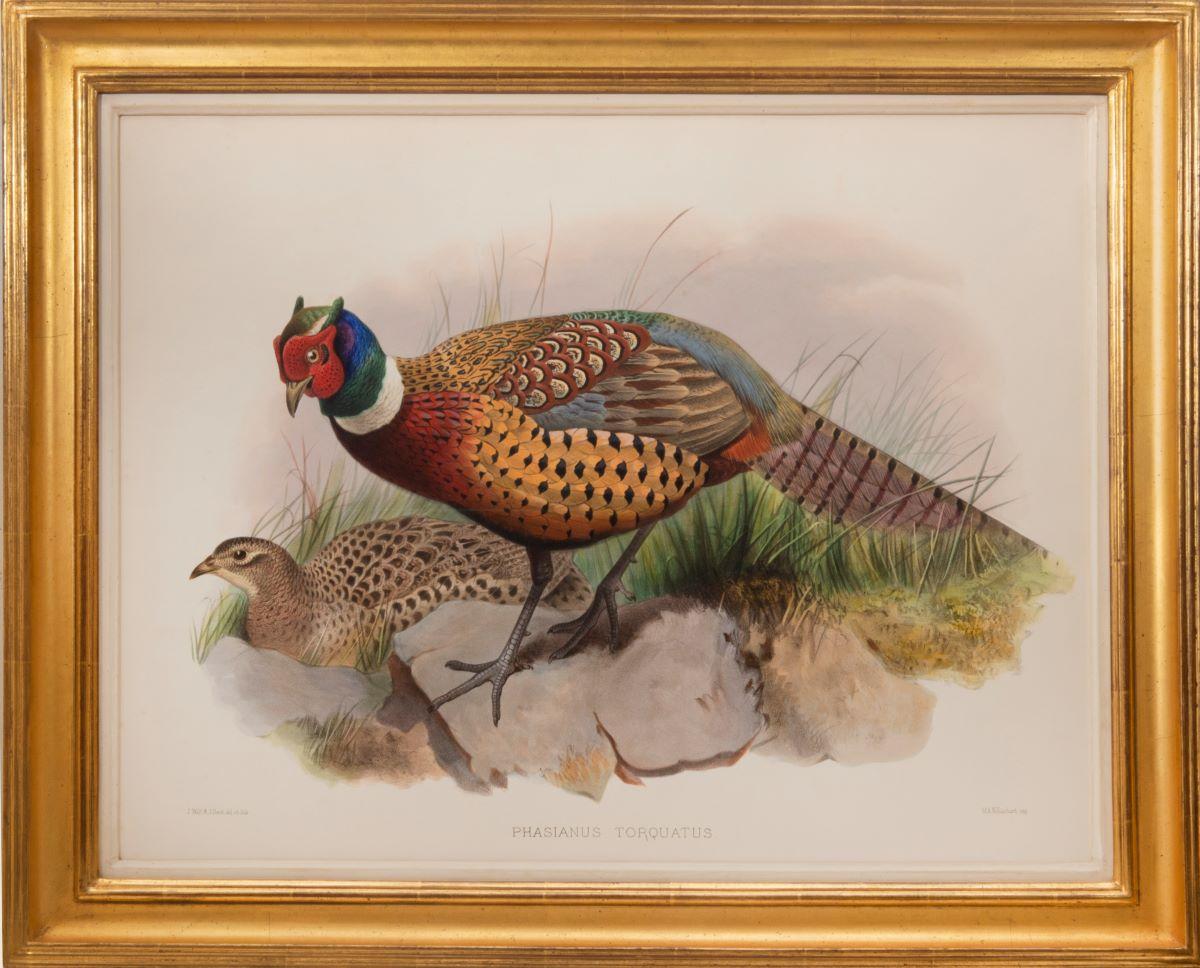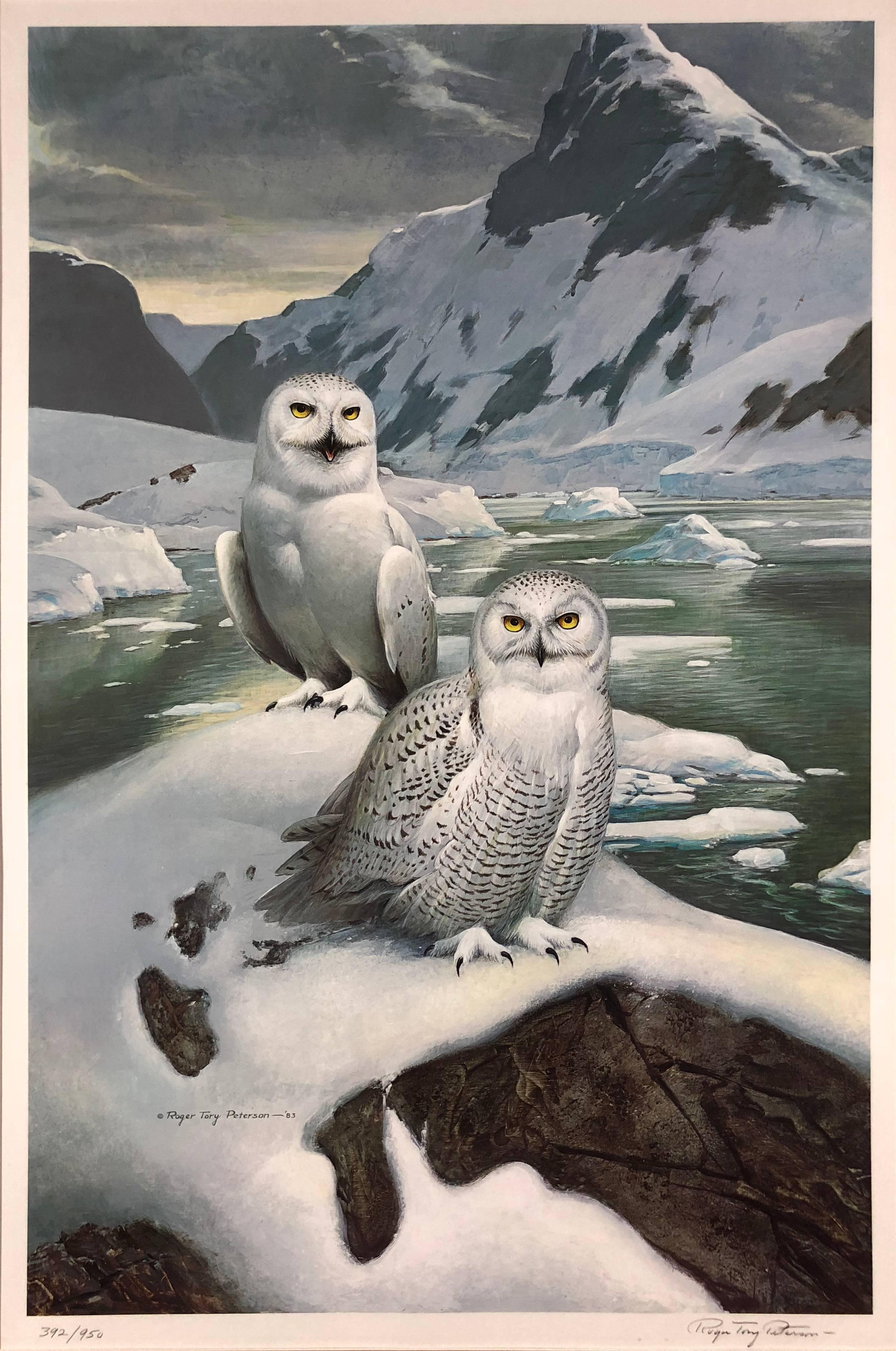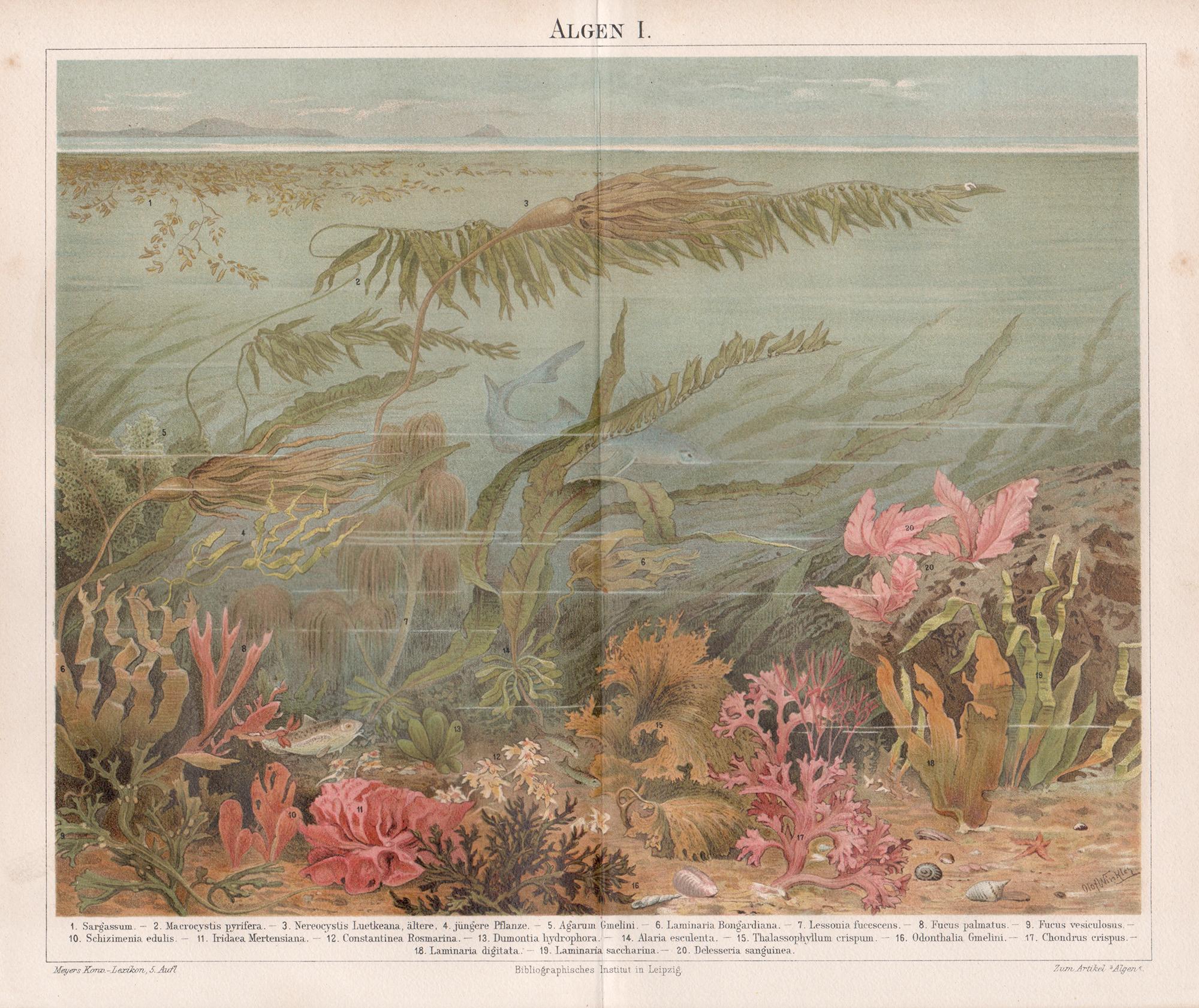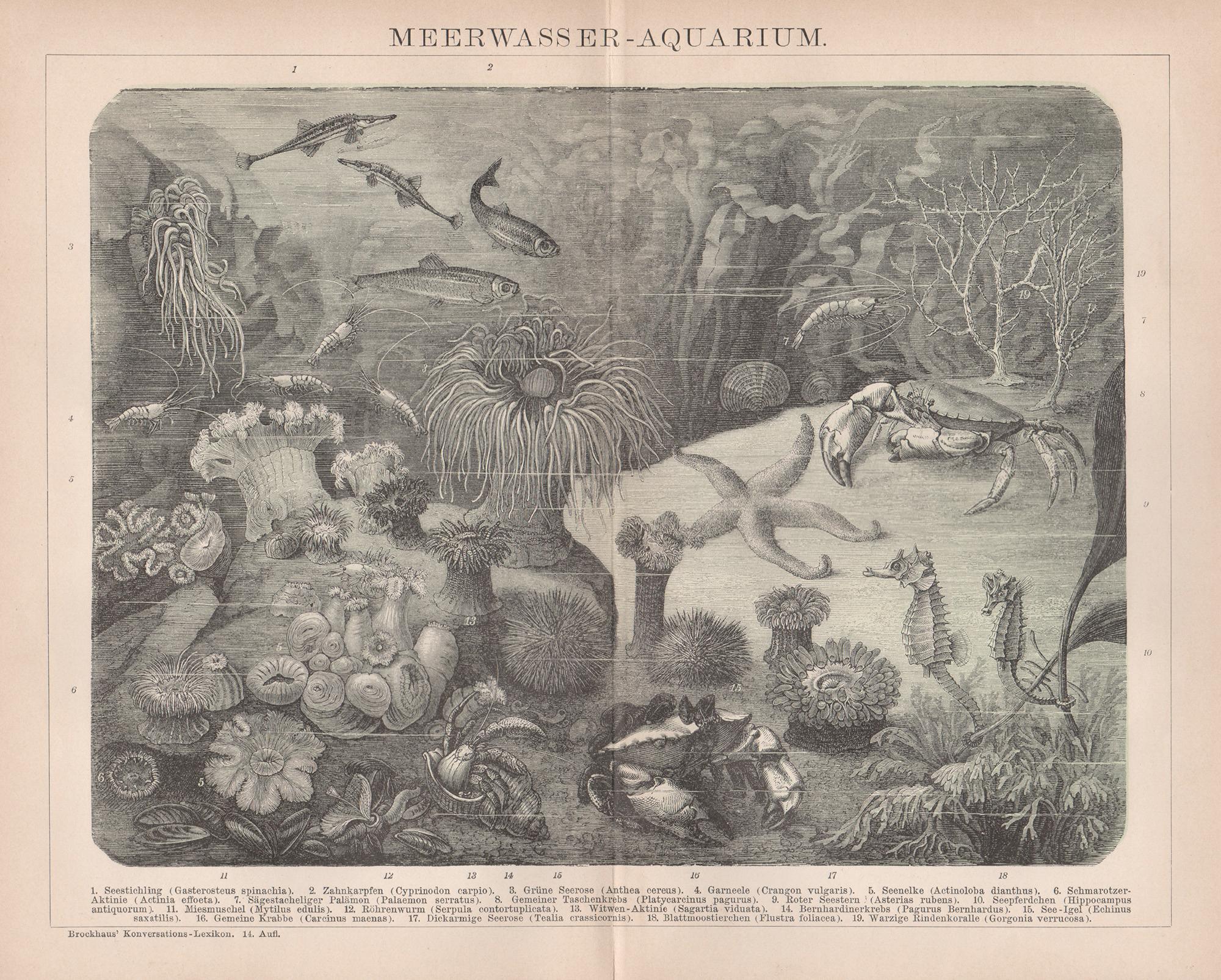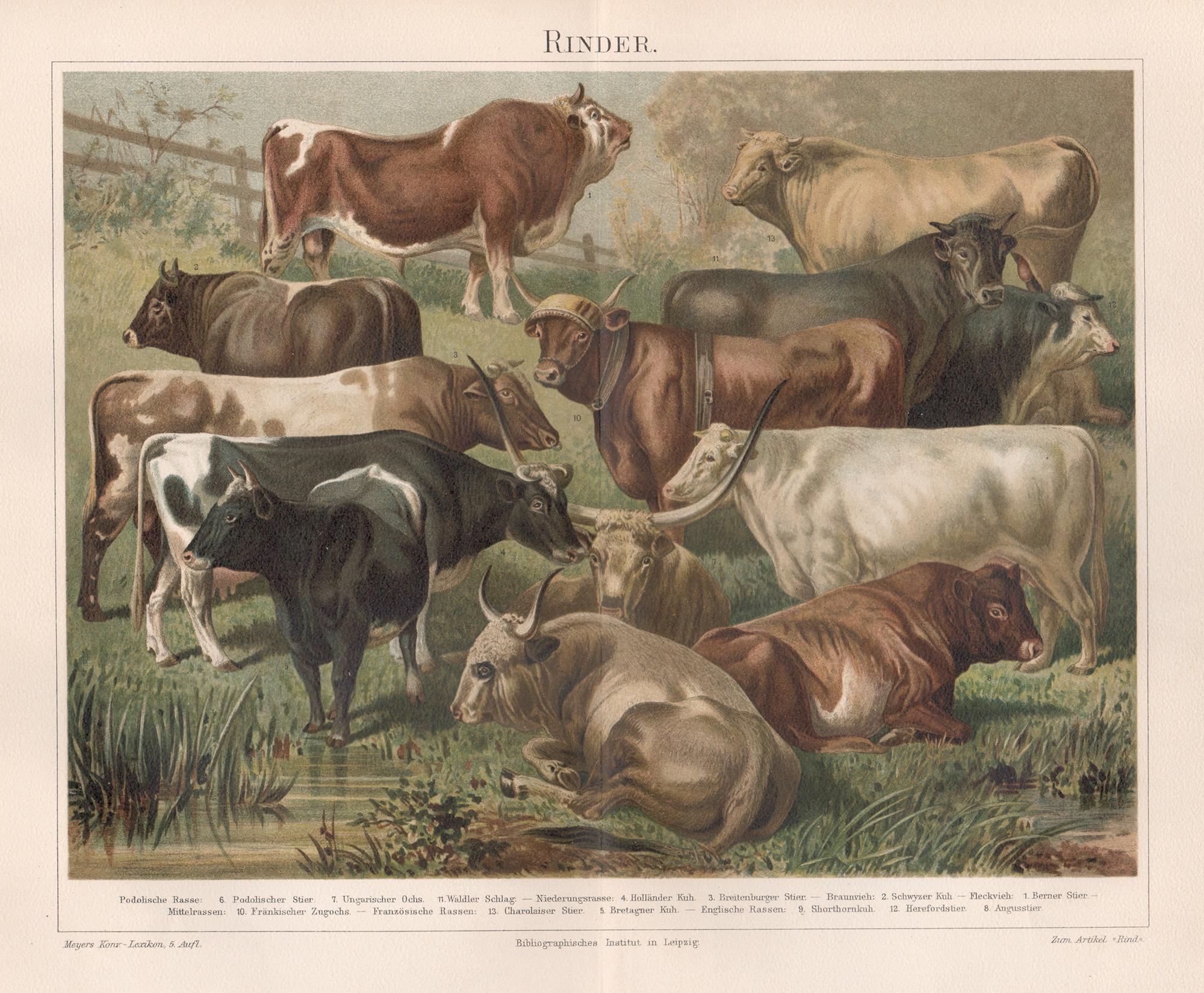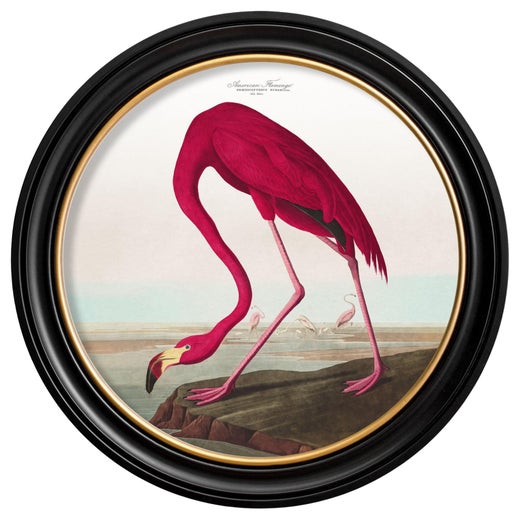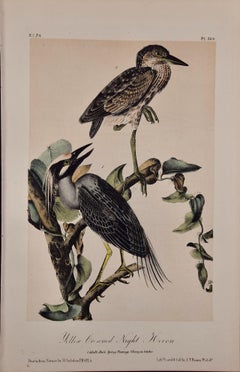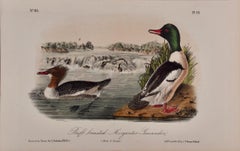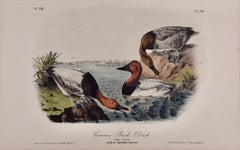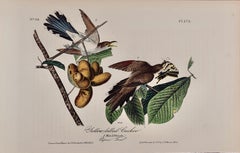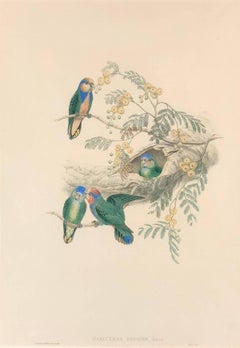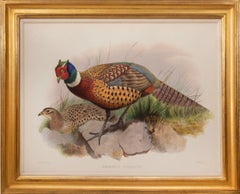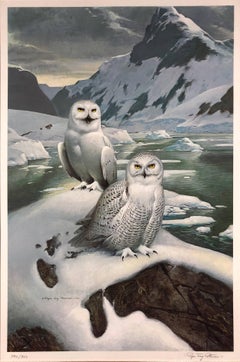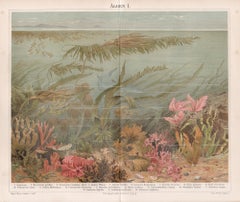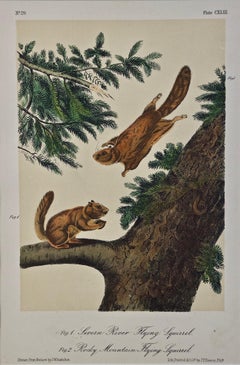
Original Audubon Hand Colored Lithograph of Flying Squirrels
View Similar Items
Want more images or videos?
Request additional images or videos from the seller
1 of 7
John James AudubonOriginal Audubon Hand Colored Lithograph of Flying Squirrels1849-1854
1849-1854
About the Item
- Creator:John James Audubon (1785-1851, American, French)
- Creation Year:1849-1854
- Dimensions:Height: 16 in (40.64 cm)Width: 12.5 in (31.75 cm)
- Medium:
- Movement & Style:
- Period:
- Condition:
- Gallery Location:Alamo, CA
- Reference Number:Seller: # 17561stDibs: LU117325509962
John James Audubon
John James Audubon (April 26, 1785, Les Cayes, Saint-Domingue (later Haiti) – January 27, 1851 (aged 65) Manhattan, New York, U.S.), born Jean-Jacques Audubon, was an American ornithologist, naturalist, and painter. He was notable for his expansive studies to document all types of American birds and for his detailed illustrations that depicted the birds in their natural habitats. His major work, a color-plate book entitled The Birds of America (1827–1839), is considered one of the finest ornithological works ever completed. Audubon identified 25 new species.
About the Seller
5.0
Platinum Seller
Premium sellers with a 4.7+ rating and 24-hour response times
Established in 2011
1stDibs seller since 2019
281 sales on 1stDibs
Typical response time: 1 hour
Authenticity Guarantee
In the unlikely event there’s an issue with an item’s authenticity, contact us within 1 year for a full refund. DetailsMoney-Back Guarantee
If your item is not as described, is damaged in transit, or does not arrive, contact us within 7 days for a full refund. Details24-Hour Cancellation
You have a 24-hour grace period in which to reconsider your purchase, with no questions asked.Vetted Professional Sellers
Our world-class sellers must adhere to strict standards for service and quality, maintaining the integrity of our listings.Price-Match Guarantee
If you find that a seller listed the same item for a lower price elsewhere, we’ll match it.Trusted Global Delivery
Our best-in-class carrier network provides specialized shipping options worldwide, including custom delivery.More From This Seller
View AllNight Heron Birds: An Original 19th C. Audubon Hand-colored Bird Lithograph
By John James Audubon
Located in Alamo, CA
This is an original John James Audubon hand-colored lithograph entitled "Yellow Crowned Night Heron, 1. Adult Male Spring Plumage, 2. Young in October", No. 73, Plate 364 from Audubo...
Category
Late 19th Century Naturalistic Animal Prints
Materials
Lithograph
Buff-breasted Merganser: Original 19th C. Audubon Hand-colored Bird Lithograph
By John James Audubon
Located in Alamo, CA
This is an original John James Audubon hand-colored lithograph entitled "Buff-breasted Merganser Goosander, 1. Male 2. Female", No. 83, Plate 411 from Audubon's "Birds of America, li...
Category
Late 19th Century Naturalistic Animal Prints
Materials
Lithograph
Canvass Back Duck: An Original 19th C. Audubon Hand-colored Bird Lithograph
By John James Audubon
Located in Alamo, CA
This is an original John James Audubon hand-colored lithograph entitled "Canvass Back Duck, 1. Male 2. Female, View of Baltimore, Maryland", No. 79, Plate 395 from Audubon's "Birds o...
Category
Late 19th Century Naturalistic Animal Prints
Materials
Lithograph
Yellow-billed Cuckoo: An Original 1st Ed. Audubon Hand-colored Bird Lithograph
By John James Audubon
Located in Alamo, CA
This is an original 1st octavo edition John James Audubon hand-colored lithograph entitled "Yellow-billed Cuckoo, 1. Male, 2, Female, Papaw Tree", No. 55, Plate 275 from Audubon's "B...
Category
Mid-19th Century Naturalistic Animal Prints
Materials
Lithograph
Stork Family: A Framed Original 19th C. Hand-colored Lithograph by Gould
By John Gould and Henry Constantine Richter
Located in Alamo, CA
This is a framed original 19th century hand-colored folio-sized lithograph entitled “Ciconia Alba” (A family of storks) by John Gould, from the supplement to his "Birds of Great Brit...
Category
Mid-19th Century Naturalistic Animal Prints
Materials
Lithograph
Bolivian Rainbow Hummingbirds: A Framed 19th C. Hand-colored Lithograph by Gould
By John Gould and Henry Constantine Richter
Located in Alamo, CA
This is an original framed 19th century hand-colored folio-sized lithograph entitled "Diphogena Aurora" (Bolivian Rainbow Hummingbirds) by John Gould, from his "Monograph of the Trochilidae, or Family of Hummingbirds", published in London in 1853. The print depicts two Bolivian Rainbow hummingbirds feeding on the nectar of small flowers on a branch.
This striking framed Gould hand-colored lithograph is presented in a antiqued gold frame, a gold-colored fillet, and a light tan French mat, embellished with a mint-colored broad band. The frame measures 32" high, 25.5" wide and 1.25" thick. The hand-coloring is enhanced by the use of gum-arabic paint on the hummingbirds heads and necks, giving them an iridescent appearance. The descriptive text page from Gould's original publication is included. It is affixed to the back of the frame in a clear sleeve. The piece is in excellent condition.
There are several other unframed Gould bird lithographs available on our 1stdibs and InCollect storefronts. Two or more of these striking lithographs would make an attractive display grouping. A discount is available for purchase of a set depending on the number. These additional Gould hummingbirds may be viewed by typing Timeless Intaglio in the 1stdibs or InCollect search field to be taken to our storefront.
John Gould (1804-1881]) was an English ornithologist and artist. He, like his American contemporary John James Audubon, published a number of books on birds in the mid 19th century, illustrated by hand-colored lithographs. His wife and fellow artist, Elizabeth Gould, and several other artists including Edward Lear and Henry Constantine Richter produced lithographs for his various publications. He has been considered the father of bird study in Australia and the Gould League in Australia is named after him. Charles Darwin referenced Gould’s work in his book, "On the Origin of Species" and Gould named a bird after Darwin; "Darwin's finches".
Gould began his career in London as a taxidermist, but in 1827 became the first curator and conservator at the museum of the Zoological Society of London. In this position naturalists brought him collections of birds from all over the world. He began creating drawings and eventually hand-colored lithographs with his wife and Edward Lear, which were the basis for his first publications. Darwin brought him specimens from the Galapagos Islands, including 12 species of finches which had never been described. In 1838, Gould and his wife travelled to Australia and their work led to the seven volume publication of “The Birds of Australia”. Gould had a fascination for hummingbirds and collected specimens of 320 varieties before ever seeing a live hummingbird on a trip to the United States in 1857. He eventually published “A Monograph of the Trochilidae, or Family of Humming-birds". Other large publications include: "The Birds of Europe"," A Monograph of the Ramphastidae, or Family of Toucans”, “A Synopsis of the Birds of Australia, and the Adjacent Islands”, “A Monograph of the Odontophorinae, or Partridges of America”, “The Birds of Asia”, “The Birds of Great Britain” and "The Birds of New Guinea and the Adjacent Papuan Islands, including many new species recently discovered in Australia".
John Gould (1804-1881) was a British ornithologist and illustrator who is best known for his monumental work, "The Birds of Europe," published between 1832 and 1837. Gould was born in Lyme Regis, Dorset, England, and began working as a taxidermist and natural history dealer in London in the 1820s. In 1827, Gould was appointed the first curator and preserver of birds at the Zoological Society of London, where he began to build his collection of specimens and began to study the birds of the world. He published his first monograph, "A Century of Birds from the Himalaya Mountains," in 1831, which included 80 plates of Himalayan birds. Gould continued to publish numerous volumes on the birds of the world throughout his life, including "The Birds of Australia" (1840-1848) and "The Birds of Great Britain" (1862-1873). His works were highly regarded for their accuracy and detail, and he was one of the most prominent ornithologists of his time.
In addition to his work as an ornithologist, Gould was also a successful businessman, and he used his profits to fund expeditions and to support the scientific community. He was elected a Fellow of the Royal Society in 1843, and he was awarded the Royal Medal...
Category
Mid-19th Century Naturalistic Animal Prints
Materials
Lithograph
You May Also Like
Nasiterna Bruijni
By John Gould
Located in Missouri, MO
John Gould (British, 1804-1881)
Nasiterna Bruijni c. 1849-1861
Hand Colored Lithograph
Image Size: approx 19.5 x 13.5 inches
Framed Size: 27 3/8 x 21 1/2 inches
John Gould was an English ornithologist and bird artist. The Gould League in Australia was named after him. His identification of the birds now nicknamed "Darwin's finches" played a role in the inception of Darwin's theory of evolution by natural selection. Gould's work is referenced in Charles Darwin's book, On the Origin of Species.
Gould was born in Lyme Regis, Dorset, the son of a gardener, and the boy probably had a scanty education. Shortly afterwards his father obtained a position on an estate near Guildford, Surrey, and then in 1818 became foreman in the Royal Gardens of Windsor. He was for some time under the care of J T Aiton, of the Royal Gardens of Windsor. The young Gould started training as a gardener, being employed under his father at Windsor from 1818 to 1824, and he was subsequently a gardener at Ripley Castle in Yorkshire. He became an expert in the art of taxidermy, and in 1824 he set himself up in business in London as a taxidermist, and his skill led to him becoming the first Curator and Preserver at the museum of the Zoological Society of London in 1827.
Gould's position brought him into contact with the country's leading naturalists, and also meant that he was often the first to see new collections of birds given to the Society. In 1830 a collection of birds arrived from the Himalayas, many not previously described. Gould published these birds in A Century of Birds from the Himalaya Mountains (1830-1832). The text was by Nicholas Aylward Vigors, and the illustrations were lithographed by Gould's wife Elizabeth, daughter of Nicholas Coxen of Kent.
This work was followed by four more in the next seven years including Birds of Europe in five volumes - completed in 1837, with the text written by Gould himself, edited by his clerk Edwin Prince. Some of the illustrations were made by Edward Lear as part of his Illustrations of the Family of Psittacidae in 1832. Lear however was in financial difficulty, and he sold the entire set of lithographs to Gould. The books were published in a very large size, imperial folio, with magnificent coloured plates. Eventually 41 of these volumes were published with about 3000 plates. They appeared in parts at £3 3s. a number, subscribed for in advance, and in spite of the heavy expense of preparing the plates, Gould succeeded in making his ventures pay and in realizing a fortune. In 1838 he and his wife moved to Australia to work on the Birds of Australia and shortly after his return to England, his wife died in 1841.
When Charles Darwin presented his mammal and bird specimens collected during the second voyage of HMS Beagle to the Geological Society of London at their meeting on 4 January 1837, the bird specimens were given to Gould for identification. He set aside his paying work and at the next meeting on 10 January reported that birds from the Galápagos Islands, which Darwin had thought were blackbirds, "gross-bills" and finches were in fact "a series of ground Finches which are so peculiar" as to form "an entirely new group, containing 12 species." This story made the newspapers.
In March, Darwin met Gould again, learning that his Galápagos "wren" was another species of finch and the mockingbirds he had labeled by island were separate species rather than just varieties, with relatives on the South American mainland. Subsequently Gould advised that the smaller southern Rhea specimen that had been rescued from a Christmas dinner...
Category
1850s Naturalistic Animal Prints
Materials
Lithograph
Four Pheasants
By Joseph Wolf
Located in London, GB
WOLF, Joseph (artist)
Four Pheasants
London, For the author, Red Lion Court, Fleet Street, 1871
Four original hand-coloured lithographic plates by Joseph Smit after Joseph Wo...
Category
1870s Naturalistic Animal Prints
Materials
Watercolor, Gouache, Lithograph
Two Snowy Owls
By Roger Tory Peterson
Located in Missouri, MO
Color Lithograph
Image Size: 30 x 19 inches
Framed Size: 40.25 x 29.75 inches
Edition 392/950
Artist Signed and Numbered
Artist and naturalist Roger Tory Peterson...
Category
Late 20th Century Naturalistic Animal Prints
Materials
Lithograph
Price Upon Request
Seaweeds, German antique underwater botanical chromolithograph print
Located in Melbourne, Victoria
'Algen I'
(Seaweeds)
German chromolithograph, circa 1895. Central vertical fold as issued.
240mm by 305mm (sheet)
Category
Late 19th Century Naturalistic Animal Prints
Materials
Lithograph
Chickens, German antique natural history bird chromolithograph print
Located in Melbourne, Victoria
'Huhner'
(Chickens
German chromolithograph, circa 1895. Central vertical fold as issued.
240mm by 305mm (sheet)
Category
Late 19th Century Naturalistic Animal Prints
Materials
Lithograph
Alpine Plants, German antique botanical flowers chromolithograph print
Located in Melbourne, Victoria
'Alpenpflanzen'
(Alpine Plants)
German chromolithograph, circa 1895. Central vertical fold as issued.
240mm by 305mm (sheet)
Category
Late 19th Century Naturalistic Animal Prints
Materials
Lithograph
